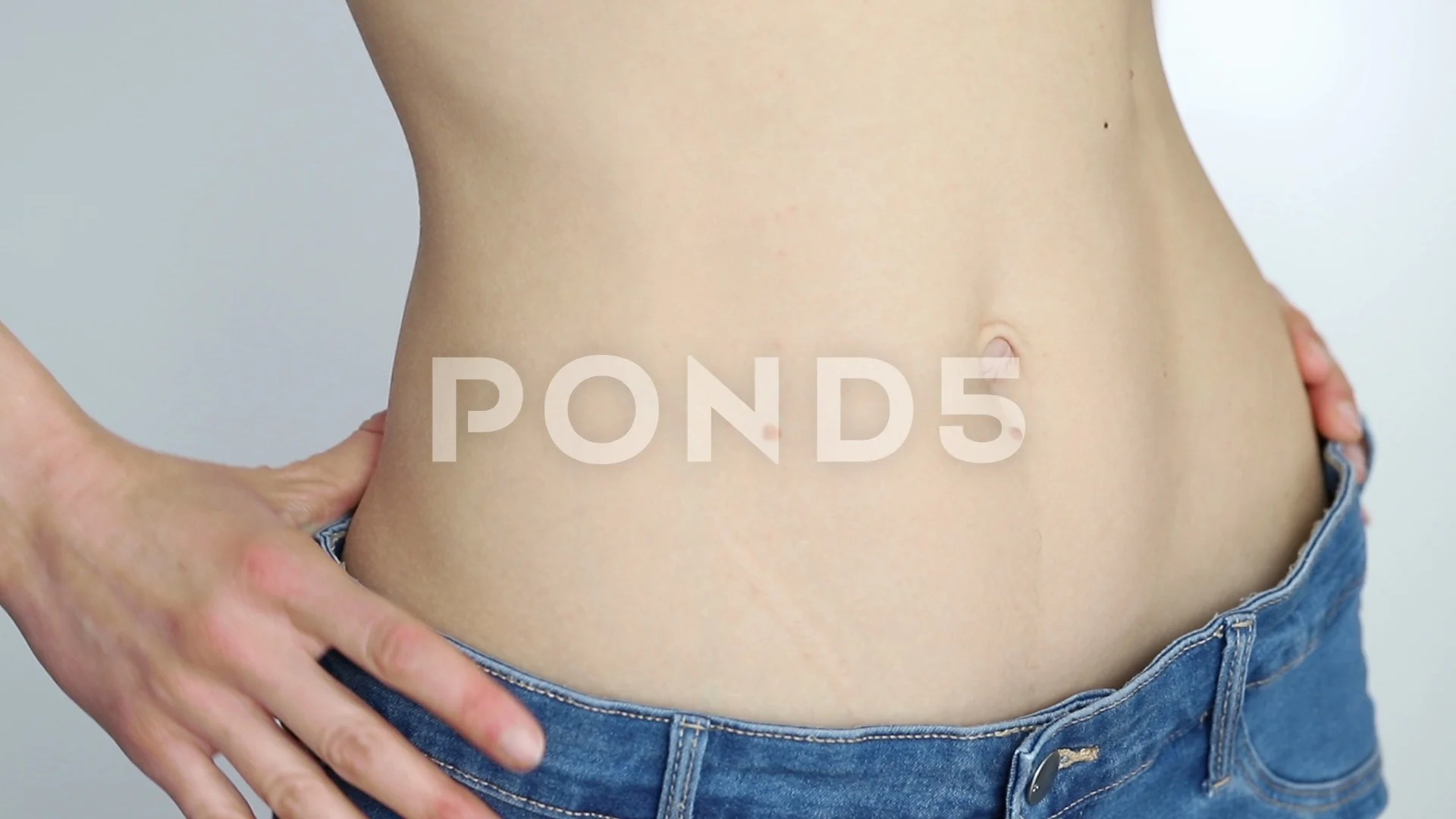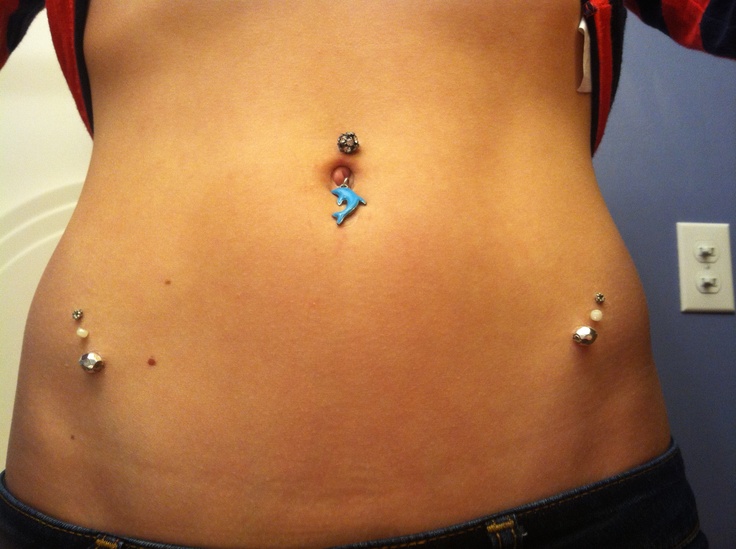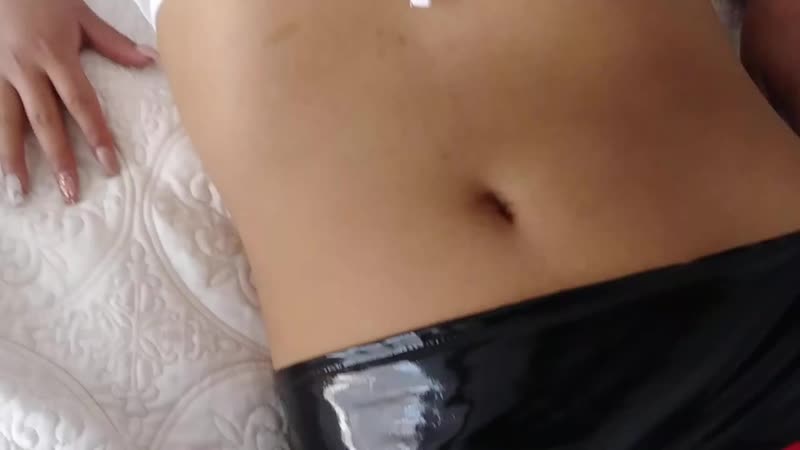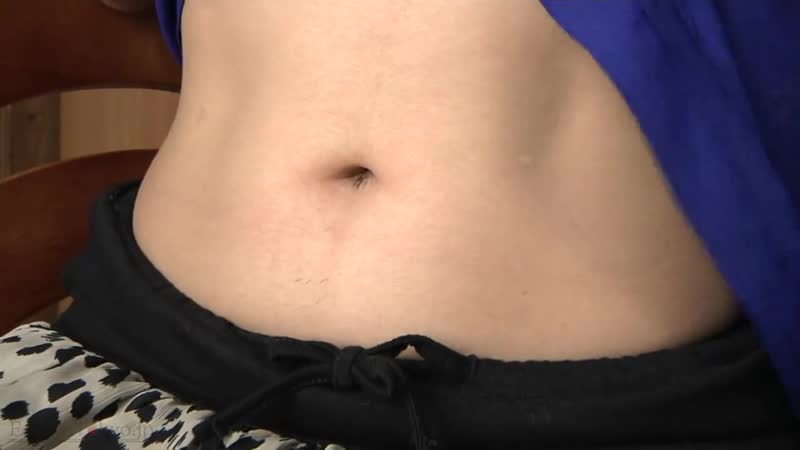Burning Sensation Around Belly Button: Causes, Treatment, and When to Seek Help
Discover the causes of a burning sensation around the belly button, including gastroenteritis, appendicitis, peptic ulcers, and more. Learn when to seek medical attention and the available treatments.
Causes of Burning Sensation Around Belly Button
A burning sensation around the belly button, also known as periumbilical pain, can be caused by a variety of conditions affecting the digestive system. Some of the common causes include:
1. Gastroenteritis
Gastroenteritis, often referred to as the “stomach flu,” is an inflammation of the digestive tract. It can be caused by viral, bacterial, or parasitic infections and may result in abdominal cramps, diarrhea, nausea, vomiting, fever, and clammy skin or sweating. Dehydration can be a serious complication, especially in children, older adults, and those with weakened immune systems.
2. Appendicitis
Appendicitis is an inflammation of the appendix, and periumbilical pain can be an early sign of this condition. The pain may start around the navel and eventually shift to the lower right side of the abdomen. Other symptoms include abdominal bloating, nausea, vomiting, pain with certain movements, digestive disturbances, fever, and loss of appetite. Appendicitis is a medical emergency, as a ruptured appendix can lead to life-threatening complications.

3. Peptic Ulcer
A peptic ulcer is a type of sore that can form in the stomach or upper small intestine (duodenum). It can be caused by an infection with the Helicobacter pylori bacteria or long-term use of certain medications like ibuprofen or aspirin. Symptoms of a peptic ulcer include a burning pain around the belly button or up to the breastbone, stomach upset, bloating, nausea, vomiting, loss of appetite, and burping.
4. Acute Pancreatitis
Pancreatitis is an inflammation of the pancreas, and in some cases, it can cause periumbilical pain. Acute pancreatitis can come on suddenly and is often caused by factors such as alcohol, infection, medications, or gallstones. Symptoms include slowly worsening abdominal pain, nausea, vomiting, fever, and an increased heart rate.
5. Umbilical Hernia
An umbilical hernia occurs when abdominal tissue bulges out through an opening in the abdominal muscles around the belly button. This can cause a feeling of pain or pressure at the site of the hernia, and a visible bulge or bump may be present. Umbilical hernias are more common in infants, but they can also occur in adults.

6. Small Bowel Obstruction
A small bowel obstruction is a partial or complete blockage of the small intestine, which can prevent the contents from passing further into the digestive tract. Causes can include infections, hernias, tumors, inflammatory bowel diseases, or scar tissue from previous abdominal surgery. Symptoms include abdominal pain or cramps, nausea, vomiting, abdominal bloating, dehydration, loss of appetite, severe constipation, fever, and an increased heart rate.
When to Seek Medical Attention
If you experience a persistent or severe burning sensation around your belly button, it’s important to seek medical attention. Seek immediate medical care if you have any of the following symptoms:
- Severe, persistent, or worsening abdominal pain
- Fever
- Nausea and vomiting
- Inability to pass gas or have a bowel movement
- Diarrhea that lasts more than a few days
- Significant weight loss
- Difficulty keeping down fluids
These symptoms may indicate a more serious underlying condition that requires prompt medical evaluation and treatment.

Treatment Options
The treatment for a burning sensation around the belly button will depend on the underlying cause. Some common treatment options include:
Medications
Medications may be prescribed to address the underlying condition, such as antibiotics for infections, proton pump inhibitors for peptic ulcers, or pain relievers for pancreatitis.
Dietary Changes
Adjusting your diet, such as avoiding certain foods or increasing fiber intake, may help alleviate symptoms in some cases, such as with gastroenteritis or peptic ulcers.
Surgical Intervention
In the case of appendicitis or a severe umbilical hernia, surgical removal of the appendix or repair of the hernia may be necessary.
Hospitalization
Severe conditions, such as small bowel obstruction or acute pancreatitis, may require hospitalization for intravenous fluids, medications, and potentially additional treatments or procedures.
Preventing Burning Sensation Around Belly Button
While some causes of a burning sensation around the belly button may not be entirely preventable, there are steps you can take to reduce your risk:

- Maintain good hygiene and handwashing to prevent the spread of infectious illnesses
- Avoid excessive use of over-the-counter medications like ibuprofen or aspirin
- Maintain a healthy weight and exercise regularly to reduce the risk of conditions like hernias
- Seek early medical attention for any persistent or concerning symptoms
Conclusion
A burning sensation around the belly button can have a variety of causes, ranging from common gastrointestinal conditions to more serious medical emergencies. It’s important to seek medical attention, especially if the pain is severe or accompanied by other concerning symptoms. With the right diagnosis and treatment, the underlying cause can often be addressed, and the burning sensation can be alleviated.
8 Causes, When to Seek Help, Treatment
Periumbilical pain is a type of abdominal pain that is localized in the region around or behind your belly button. This part of your abdomen is referred to as the umbilical region. It contains parts of your stomach, small and large intestine, and your pancreas.
There are many conditions that can cause periumbilical pain. Some of them are quite common while others are rarer.
Read on to learn the possible causes for periumbilical pain and when you should seek medical attention.
1. Gastroenteritis
Gastroenteritis is an inflammation of your digestive tract. You may also have heard it referred to as the “stomach flu.” It can be caused by a viral, bacterial, or parasitic infection.
In addition to abdominal cramps, you may experience the following symptoms:
- diarrhea
- nausea or vomiting
- fever
- clammy skin or sweating
Gastroenteritis usually doesn’t require medical treatment. Symptoms should resolve within a few days. However, dehydration can be a complication with gastroenteritis due to water lost through diarrhea and vomiting. Dehydration can be serious and require treatment, especially in children, older adults, and in people with a weakened immune system.
Symptoms should resolve within a few days. However, dehydration can be a complication with gastroenteritis due to water lost through diarrhea and vomiting. Dehydration can be serious and require treatment, especially in children, older adults, and in people with a weakened immune system.
2. Appendicitis
Periumbilical pain can be an early sign that you have appendicitis. Appendicitis is inflammation of your appendix.
If you have appendicitis, you may feel sharp pain around your navel that eventually shifts to the lower right side of your abdomen. Additional symptoms can include:
- abdominal bloating
- nausea or vomiting
- pain that becomes worse when you cough or make certain movements
- digestive disturbances, such as constipation or diarrhea
- fever
- loss of appetite
Appendicitis is a medical emergency. If it’s not treated quickly, your appendix can rupture. A ruptured appendix can cause potentially life-threatening complications. Learn more about the emergency signs and symptoms of appendicitis.
Learn more about the emergency signs and symptoms of appendicitis.
Treatment for appendicitis is surgical removal of your appendix.
3. Peptic ulcer
A peptic ulcer is a type of sore that can form in your stomach or upper small intestine (duodenum).
Peptic ulcers can be caused by a variety of things, such as infection with Helicobacter pylori bacteria or long-term use of drugs like ibuprofen (Advil, Motrin) or aspirin.
If you have a peptic ulcer, you may feel a burning pain around your belly button or even up to your breastbone. Further symptoms include:
- stomach upset
- feeling bloated
- nausea or vomiting
- loss of appetite
- burping
Your doctor will work with you to determine the right treatment for your peptic ulcers. Medications may include:
- proton pump inhibitors
- histamine receptor blockers
- protectants, such as sucralfate (Carafate)
4. Acute pancreatitis
Pancreatitis can cause periumbilical pain in some cases. Pancreatitis is an inflammation of your pancreas.
Pancreatitis is an inflammation of your pancreas.
Acute pancreatitis can come on suddenly. It can be caused by various things, including alcohol, infection, medications, and gallstones.
In addition to slowly worsening abdominal pain, symptoms of pancreatitis can include:
- nausea or vomiting
- fever
- an increase in heart rate
A mild case of pancreatitis can be treated with bowel rest, intravenous (IV) fluids, and pain medication.
More severe cases typically require hospitalization.
If the pancreatitis is due to gallstones, surgery may be required to remove the gallstones or the gallbladder itself.
5. Umbilical hernia
An umbilical hernia is when abdominal tissue bulges out through an opening in the abdominal muscles around your belly button.
Umbilical hernias most often occur in infants, but they can also occur in adults.
An umbilical hernia can cause a feeling of pain or pressure at the site of the hernia. You may see a bulge or bump.
You may see a bulge or bump.
In infants, most umbilical hernias will close up by the age of 2. In adults with an umbilical hernia, surgery is typically recommended in order to avoid complications such as intestinal obstruction.
6. Small bowel obstruction
Small bowel obstruction is a partial or complete block of your small intestine. This blockage can prevent the contents of your small intestine from passing further into your digestive tract. Left untreated, it can become a serious condition.
Several things can cause small bowel obstruction, including:
- infections
- hernias
- tumors
- inflammatory bowel disease
- scar tissue from previous abdominal surgery (adhesions)
In addition to abdominal pain or cramps, you may experience:
- nausea and vomiting
- abdominal bloating
- dehydration
- loss of appetite
- severe constipation or inability to pass stool
- fever
- an increase in heart rate
If you have a small bowl obstruction, you will need to be hospitalized.
While at the hospital your doctor will give you IV fluids and medications to relieve your nausea and vomiting. Bowel decompression may also be performed. Bowel decompression is a procedure that helps reduce pressure within your intestine.
Surgery may be needed in order to repair the obstruction, especially if it’s caused by a previous abdominal surgery.
7. Abdominal aortic aneurysm
Aortic aneurysm is a serious condition caused by the weakening or bulging of the walls of your aorta. Life-threatening problems can occur if the aortic aneurysm ruptures. That can allow blood from the aorta to leak into your body.
As an abdominal aortic aneurysm gets larger, you may feel a steady, pulsing pain in your abdomen.
If an abdominal aortic aneurysm ruptures, you’ll feel sudden and stabbing pain. The pain may radiate to other parts of your body.
Additional symptoms include:
- difficulty breathing
- low blood pressure
- an increase in heart rate
- fainting
- a sudden weakness on one side
Treatment for abdominal aortic aneurysm may include lifestyle changes such as controlling your blood pressure and quitting smoking. Surgery or placement of a stent may also be recommended.
Surgery or placement of a stent may also be recommended.
A ruptured abdominal aortic aneurysm is a medical emergency and requires immediate surgical intervention.
8. Mesenteric ischemia
Mesenteric ischemia is when blood flow to your intestines is interrupted. It’s typically caused by a blood clot or embolism.
If you have mesenteric ischemia, you may initially feel severe abdominal pain or tenderness. As the condition progresses, you may also experience:
- an increase in heart rate
- blood in your stool
If you suspect mesenteric ischemia, seek immediate medical attention. Treatments can include surgery and anticoagulation therapy.
If you’re experiencing periumbilical pain that lasts more than a few days, you should make an appointment with your doctor to discuss your symptoms.
Seek immediate medical attention if you are experiencing the following symptoms in addition to periumbilical pain:
- severe abdominal pains
- fever
- nausea and vomiting that doesn’t go away
- blood in your stool
- swelling or tenderness of your abdomen
- unexplained weight loss
- yellowish skin (jaundice)
To determine the cause of your pain, your doctor will first take your medical history and perform a physical examination.
Depending on your medical history, symptoms, and physical examination, your doctor may perform additional tests to help reach a diagnosis. These tests may include:
- blood tests to assess your blood cell counts and electrolyte levels
- urine analysis to rule out a urinary tract infection (UTI) or kidney stones
- stool sampling to check for pathogens in your stool
- endoscopy to evaluate your stomach or duodenum for ulcers
- imaging tests, such as X-ray or CT scans, to help visualize the organs of your abdomen
There are many possible causes of periumbilical pain. Some of them, such as gastroenteritis, are common and typically go away in a few days. Others, such as mesenteric ischemia, are medical emergencies and need to be addressed right away.
If you’ve experienced periumbilical pain for several days or have concerns about your periumbilical pain, make an appointment with your doctor to discuss your symptoms and treatment options.
Belly button pain : Causes, Treatment & Prevention
When people feel pain around their stomach area, they get confused about the actual location and reason of the pain; is it in the upper abdomen? Is it in the lower quadrant? Is it an infection? Is it gas? Among the reasons behind this pain is one condition which is not widely talked about and is called “periumbilical pain”. This pain is located around the belly button area on the lower abdomen. It is called ‘periumbilical’ as the belly button area is referred to as the umbilical region, and the belly button itself is called either the ‘navel’ or the ‘umbilicus’. It is difficult to detect if the pain is related to the umbilicus, as it may be mistaken with any other part of the stomach. However, there are many reasons which mean that the person is suffering from periumbilical pain, and it is a serious condition which should not be overlooked.
As defined by Andrei (2021), “the belly button is typically the body’s first scar, caused by the detachment of the umbilical cord after birth. ” It is not a biologically useful part of the human body; however, it is the center which makes it easier to divide the abdomen. Mainly, the belly button is most important in childbirth procedures. The shape of the belly button is considered important in the identification of any abnormality or issue in the human body.
” It is not a biologically useful part of the human body; however, it is the center which makes it easier to divide the abdomen. Mainly, the belly button is most important in childbirth procedures. The shape of the belly button is considered important in the identification of any abnormality or issue in the human body.
The belly button is connected to many organs in the lower abdomen area, so any pain felt in those organs might lead to periumbilical pain. These organs are:
The cecum
The appendix
The ovaries and fallopian tubes
The right ureter
The colon
Belly button pain is not a widely common condition; therefore, when a certain pain is felt, in any of the previously mentioned areas, the patient should get tested to identify the cause and then receive the right treatment.
Causes of belly button pain
As periumbilical pain isn’t a disorder itself, many underlying causes lead to it. The pain felt around the area may vary depending on the cause and the situation. Here are some of the most known causes for belly button pain.
The pain felt around the area may vary depending on the cause and the situation. Here are some of the most known causes for belly button pain.
Dyspepsia
Dyspepsia is the more medical term for indigestion. When the person suffers from indigestion, their stomach is constantly upset, which causes sensations of pain, discomfort, burning, and pain. This condition begins in the upper abdomen, and later on radiates to the area of the belly button. It is one of the most common causes for periumbilical pain, as 1 in every 4 Americans suffer from indigestion, according to the National Institute of Diabetes and Digestive and Kidney Diseases (Medical News Today, 2020).
Gastroenteritis
When the digestive tract gets inflamed, then the person is definitely suffering from gastroenteritis. People refer to this condition as the “stomach flu”, and it is widely common and affects a lot of people due to many reasons, such as a viral infection, or bacteria from the consumption of contaminated food.
 Not only does it cause pain to the entire stomach area, but it also leads to vomiting, nausea, cramping, excessive sweating, and more (Healthline, 2016).
Not only does it cause pain to the entire stomach area, but it also leads to vomiting, nausea, cramping, excessive sweating, and more (Healthline, 2016).Appendicitis
As the appendix is located next to the belly button area, any infection or disease that might affect it will lead to sharp pain in the belly button. The infection mainly begins in the belly button, then travels to the right stomach area. The reason for that is that the appendix and the thin membrane above the abdominal organs get inflamed, which is detected by the brain as a referred pain in the belly button area (Gambrah-Lyles, 2020). It is important to note that this pain doesn’t go away without a medical intervention. Therefore, if the patient felt any unusual symptoms for a long period of time, such as bloating, nausea, vomiting, and loss of appetite, they should immediately consult a health care professional.
Umbilical Hernia:
A common and harmless condition, an umbilical hernia occurs in infants more than adults.
 It is a condition in which a part of the intestine is pushed out of the human body through a cavity around the belly button. It usually causes a bump on the stomach.
It is a condition in which a part of the intestine is pushed out of the human body through a cavity around the belly button. It usually causes a bump on the stomach.The pain felt is severe and it is mainly located around the belly button area. This condition cannot be treated through medications; the patient should immediately undergo surgery.
Acute Pancreatitis When the pancreas is inflamed, it could directly lead to abdominal, and more specifically periumbilical pain. This condition can be a result of many other underlying causes, such as gallstones, infections, or excessive alcohol intake. Pancreatitis should be surgically solved, otherwise it will cause more serious damage to the entire abdominal area.
Ulcer: A peptic ulcer, which is formed in the lining of the stomach or on the duodenum, can cause severe stomachache, which leads to belly button pain. It is characterized by a sensation of burning around the belly button, leading up to the breastbone.
 It also causes bloating, nausea, excessive burping, loss of appetite, and stomach cramps.
It also causes bloating, nausea, excessive burping, loss of appetite, and stomach cramps.Pregnancy: During pregnancy, women feel pain in their round ligament, which is close to the belly button. It happens most commonly during the second trimester, when the woman coughs, laughs, or makes sudden and fast movements. It’s important to note that this pain is very normal during pregnancy, and it isn’t a cause for concern.
Many more causes might lead to periumbilical pain such as gallbladder infection (cholecystitis), intestinal inflammation (diverticulitis), and gastrointestinal infections (Gambrah-Lyles, 2020).
How can periumbilical pain be diagnosed?
A thorough examination of the belly button is done, as a simple look from the doctor can determine if there’s a serious issue.
If the belly button is ejecting discharge, caused by an infection, the doctor might take a sample of the discharge, then send it to the laboratory for testing.
If another condition is causing the pain, then the diagnosis will be dependent on the underlying cause. After studying the medical history of the patient, the symptoms of their pain, and the physical examination, the health care professional might suggest the following diagnostic tests:
A blood test to check if blood cells are within the normal range.
Urinal analysis to check for infections.
Imagine tests (CT scans and X-rays) to check the organs and their health.
Endoscopy to check for ulcers.
What are the treatment options?
As causes for periumbilical pain vary, treatment options are also diversified.
In case of infectious causes, antibiotics are prescribed to fight away bacteria and heal the body from their impact.
In case of inflammation, anti-inflammatory drugs and steroid creams are prescribed to cure autoimmune diseases, such as inflammatory bowel disease.

In case of obstructive and digestive causes, bowel rest is recommended, along with following a strict diet.
In case of more advanced conditions, such as a hernia and appendicitis, surgery is recommended.
How can periumbilical pain be prevented?
Keeping the belly button healthy and clean is crucial to prevent infections. Here are a few tips to how one can maintain their belly button hygiene:
Wash the belly button daily and use saltwater to keep it sanitized.
Use a cloth or sponge to clean the inside of the belly button.
Avoid wearing tight clothing which might irritate the belly button.
Don’t use any creams inside the belly button, as they might clog it, which promotes bacterial infections.
Dry the inside of the belly button completely after showering (Healthline, 2020).
Facts about belly button pain
Any surgical procedure done in the abdominal area might cause serious belly button pain.

Constipation is one of the main causes for belly button pain, but it is not widely mentioned as it is easily solved in most cases.
There are two forms of belly buttons: the “innie” and the “outie”, but most belly buttons are innies. Pregnancy changes the belly button from an “innie” to an “outie”. Based on reports done by Cleveland Clinic, when the woman’s abdomen expands during pregnancy, belly buttons who have a more inside shape pop out (Erikson, 2020).
The belly button is one of the organs which house a lot of bacteria. “A 2012 research review showed that your belly button may be home to 67 bacteria types.” (Healthline, 2021
There’s a surgical procedure called “umbilicoplasty”, which is mainly a plastic surgery for belly buttons. A lot of people like to undergo this surgery as they care about the appearance of their belly buttons.
References
Andrei, Mihai. “What is the belly button, does it serve any purpose, and why is it an “innie” or
“What is the belly button, does it serve any purpose, and why is it an “innie” or
an “outie”.” ZME Science. 28 January 2021. Retrieved from
https://www.zmescience.com/other/feature-post
Gambrah-Lyles, Claudia. “Pain Around the Belly Button”. Buoy Health. 17 October 2020.
Retrieved from
https://www.buoyhealth.com/learn/pain-around-belly-button
“Umbilical Hernia”. Mayo Clinic. 27 May 2020. Retrieved from
https://www.mayoclinic.org/diseases-conditions/umbilical-hernia/symptoms-causes/syc-
20378685
Erikson, Alexa. “10 Things you Never Knew about your Belly Button”. The Healthy. 4 August
2020. Retrieved from
https://www.thehealthy.com/beauty/face-body-care/things-you-
didnt-know-belly-button/
“Common Causes for Belly Button Pain”. Medical News Today. 15 January 2020. Retrieved
from
https://www.medicalnewstoday.com/articles/319931
“Belly Button Pain”. Healthline. 17 September 2018. Retrieved from
https://www. healthline.com/health/belly-button-pain
healthline.com/health/belly-button-pain
“Periumbilical Pain”. Healthline. 16 April 2019. Retrieved from https://www.healthline.com/health/periumbilical-pain
If you or anyone you know is suffering from pain, call us today on (469) 562 4188 to book an appointment with our expert doctors.
All about pain in the navel area
What should be done to diagnose and treat pain in the navel area ? To solve this problem, the first step for the patient is to make an appointment with a gastroenterologist. After the initial examination, the doctor may prescribe additional tests:
- Ultrasound of the abdominal cavity
- Abdominal MRI
- CT scan of the abdomen.
Causes of umbilical pain
Gastroenteritis and navel pain
Gastroenteritis is an inflammation of the digestive tract, also called “stomach flu”. This condition can be caused by a viral, bacterial, or parasitic infection. In addition to abdominal cramps and pain in the navel, the patient may experience the following symptoms: diarrhea, nausea or vomiting, fever, clammy skin, or sweating. Gastroenteritis usually does not require treatment. But due to diarrhea and vomiting, the patient may develop dehydration.
In addition to abdominal cramps and pain in the navel, the patient may experience the following symptoms: diarrhea, nausea or vomiting, fever, clammy skin, or sweating. Gastroenteritis usually does not require treatment. But due to diarrhea and vomiting, the patient may develop dehydration.
Appendicitis and pain near the navel
Pain in the umbilical region, which gradually shifts to the right side, may be an early sign of appendicitis. Additional symptoms include: bloating, nausea or vomiting, pain near the navel that gets worse when you cough or move your torso, constipation or diarrhea, fever, loss of appetite. Appendicitis is a medical emergency. If left untreated, the appendix can rupture.
Peptic ulcer and abdominal pain in the umbilical region
Peptic ulcers in the stomach or upper small intestine may be due to infection or long-term use of certain drugs. With a peptic ulcer, the patient may feel a burning pain around the navel along with the following symptoms: indigestion, feeling bloated, nausea or vomiting, loss of appetite, belching. Medications for treatment: proton pump inhibitors, histamine receptor blockers
Medications for treatment: proton pump inhibitors, histamine receptor blockers
Acute pancreatitis and pain above the umbilicus
In some cases, acute inflammation of the pancreas can cause pain in the umbilical region. This condition can develop due to alcohol abuse, infections, and the formation of gallstones. If pancreatitis is caused by gallstones, then the patient may need surgery to remove the gallstones or the gallbladder itself. In addition to slowly worsening abdominal pain, symptoms of pancreatitis may include: nausea or vomiting, fever, and rapid heartbeat. A mild episode of pancreatitis can be treated with fasting and intravenous pain medication. In more severe cases, hospitalization is usually required.
Umbilical hernia and pain around the navel
An umbilical hernia is a condition in which abdominal tissue protrudes through an opening in the abdominal muscles around the navel. An umbilical hernia occurs at the navel when a loop of intestine passes through the umbilical ring, a small opening in the abdominal muscles of the fetus. Umbilical hernias most often occur in newborns, and in 90% of cases they close naturally by 5 years of age. The condition may cause a sensation of umbilical pain or pressure in the affected area. The patient can also palpate the bulge on their own. In infants, most umbilical hernias close by 2 years of age. Adult patients with an umbilical hernia usually have surgery to avoid complications such as intestinal obstruction.
Umbilical hernias most often occur in newborns, and in 90% of cases they close naturally by 5 years of age. The condition may cause a sensation of umbilical pain or pressure in the affected area. The patient can also palpate the bulge on their own. In infants, most umbilical hernias close by 2 years of age. Adult patients with an umbilical hernia usually have surgery to avoid complications such as intestinal obstruction.
Small bowel obstruction and pain around the navel
Small bowel obstruction is a partial or complete blockage that can prevent the contents of the small intestine from moving further into the digestive tract. The following factors can cause small bowel obstruction:
- infections
- hernias
- tumors
- inflammatory bowel disease
- scar tissue from previous abdominal surgery (adhesions).
In addition to abdominal and navel pain or cramps, the patient may experience the following symptoms: nausea and vomiting, bloating, dehydration, loss of appetite, severe constipation or inability to pass stools, fever, increased heart rate. If the patient has intestinal obstruction, then hospitalization is required. While the patient is in the hospital, the doctor will prescribe special drugs to reduce nausea and vomiting. Decompression, a procedure that helps relieve pressure in the intestines, may also be performed. Surgery may be required to clear the obstruction, especially if the condition was caused by previous abdominal surgery.
If the patient has intestinal obstruction, then hospitalization is required. While the patient is in the hospital, the doctor will prescribe special drugs to reduce nausea and vomiting. Decompression, a procedure that helps relieve pressure in the intestines, may also be performed. Surgery may be required to clear the obstruction, especially if the condition was caused by previous abdominal surgery.
Abdominal aortic aneurysm and pain above the umbilicus
Aortic aneurysm is a serious disease caused by weakening or bulging of the walls of the aorta. When an aortic aneurysm ruptures, life-threatening complications can occur. As the abdominal aortic aneurysm enlarges, the patient may feel a constant throbbing pain in the abdomen above the navel. If an abdominal aortic aneurysm ruptures, there will be sudden and stabbing pain that may radiate to other parts of the body. Additional symptoms include: difficulty breathing, low blood pressure, increased heart rate, fainting, sudden weakness on one side of the body. Treatment for an abdominal aortic aneurysm may include lifestyle changes, such as controlling blood pressure and not smoking. Surgery or placement of a stent may also be recommended.
Treatment for an abdominal aortic aneurysm may include lifestyle changes, such as controlling blood pressure and not smoking. Surgery or placement of a stent may also be recommended.
Mesenteric ischemia and pain above the navel
Mesenteric ischemia is a condition in which blood flow to the intestines is interrupted. This is usually caused by a thrombus or embolism. In mesenteric ischemia, the patient may first experience severe pain in the abdomen above the navel. As the condition progresses, there may be an increase in heart rate, blood in the stool. If mesenteric ischemia is suspected, immediate medical attention is recommended. Treatment may include surgery and anticoagulant therapy.
Share:
The best doctors in St. Petersburg
Vasilevitskaya Irina Valerievna
Rating: 4.8 / 5
Enroll
Dedkova Olga Vladimirovna
Rating: 4.9 / 5
Enroll
Ilchishina Tatyana Alekseevna
Rating: 4.8 / 5
Enroll
Akayeva Svetlana Vladimirovna
Rating: 4. 9 / 5
9 / 5
Enroll
Aleksyuk Elena Alexandrovna
Rating: 4.7 / 5
Enroll
Andreev Alexander Sergeevich
Rating: 4.8 / 5
Enroll
Scientific sources:
- Healy P.M., Jacobson E.J. Differential diagnosis of internal diseases: an algorithmic approach. Per. from English. Moscow: CJSC BINOM Publishing House, 2002. 280 p.
- Jacob A. Pain in the right upper quadrant of the abdomen // In the book: G.P. Krestin, P.L. Choika. Acute abdomen: Imaging diagnostic methods: Per. from English. / Under the total. ed. I.N. Denisov. M.: GEOTAR MEDICINE, – 2000. – S. 20-45.
- Todua F.I., Vilyavin M.Yu. Pancreas. // In the book: Todua F.I., Fedorov V.D., Kuzin M.I. Computed tomography of the abdominal organs. (Atlas) USSR Academy of Medical Sciences. M.: Medicine, 1991. – S. 19-29.
- Hofer M. Computed tomography. Basic guide. /trans.engl. Ed. G.E. Trufanova.- M.: Med.lit.-2006.- 208C.
- Shcherbatenko M.K., Beresneva E.
 A. Emergency X-ray diagnostics of acute surgical diseases and injuries of the abdominal organs. — M.: Medicine, 1977.-207 p.
A. Emergency X-ray diagnostics of acute surgical diseases and injuries of the abdominal organs. — M.: Medicine, 1977.-207 p.
Useful information
Abdominal abscess
What should be done to diagnose and treat an abdominal abscess? To solve this problem, the first step for the patient is to make an appointment with an abdominal surgeon. After the initial examination, the doctor may prescribe additional studies:
abdominal ultrasound
Abdominal CT with contrast
Abdominal MRI with contrast
Lab tests.
read more +
MRI and CT of the abdomen
It is very difficult for an ordinary person to distinguish between MRI and CT examination of the abdominal cavity on the image. Formally, the pictures are very similar, but the physics of obtaining them is very different. In the medical environment, there is also no consensus and understanding on the issue of which is better: MRI or CT of the abdominal cavity. Many physicians believe that CT scans are the preferred method for diagnosing dense, hard tissue (bone)
read more +
MRI of the abdomen
Abdominal tomography is one of the most highly informative forms of hardware diagnostics available to a wide range of patients in St. Petersburg clinics. An MRI of the abdominal cavity will show well the structure of organ tissues, their size, location, the presence of foreign invasions, the level of interaction with neighboring tissues and structures. Especially informative is the tomography of the abdominal cavity with the use of contrast.
Petersburg clinics. An MRI of the abdominal cavity will show well the structure of organ tissues, their size, location, the presence of foreign invasions, the level of interaction with neighboring tissues and structures. Especially informative is the tomography of the abdominal cavity with the use of contrast.
read more +
Pain around the navel – General information, Causes. Tomsk
General information
Pain around the navel can be a sign of a serious illness. Pain in the abdomen has always been and is one of the most unpleasant for us. After all, when the stomach hurts, we definitely can’t do anything, even walk normally.
It is often difficult to determine the causes of pain around the navel. In certain situations, even a consistent detailed study of the causes of pain is impossible. Often, for high-quality diagnosis and treatment prescription, a great experience of the attending physician is necessary, because sometimes the picture of the disease is incomprehensible, erased.(mh=c1hB54bXMF1eg1pA)6.jpg)
Pain around the navel in diseases
Pain around the navel can be caused by various reasons. First of all, it can be diseases of the small intestine (enteritis) of bacterial, viral, parasitic etiology.
In addition, it is worth mentioning such a disease as exacerbation of chronic enteritis. Chronic enteritis is a disease characterized by inflammatory and degenerative changes in the small intestine mucosa. May be associated with damage to the large intestine (enterocolitis). The cause of this disease is past intestinal infections, giardiasis.
The clinic is manifested by mild, dull, aching diffuse pain that occurs after eating or independently of it; a feeling of fullness, heaviness, fullness in the epigastric region and around the navel (these sensations are intensified after eating and in the evening). It is also characterized by the following features:
The patient’s nails are brittle, bleeding gums are observed , weakness, fatigue.
Acute appendicitis
The most common acute abdominal disease requiring surgical intervention is acute appendicitis . The disease begins suddenly, with the appearance of pain in the epigastric region or throughout the abdomen, sometimes around the navel, which gradually increase. After some time, they are localized in the right half of the abdomen, the right iliac region (near the wing of the ilium on the right).
In acute appendicitis, a slight increase in temperature is observed , increased heart rate, dry tongue. When pressing on the abdomen, a sharp pain is determined in the right half of the abdomen, the right iliac region, which intensifies when the hand is released, muscle tension.
Umbilical hernia
Umbilical hernia, which is accompanied by severe pain around the navel, nausea, vomiting, retention of stool and flatus, increased heart rate. In the area of the hernia, along with pain, a dense formation of a round or oblong shape is determined, sharply painful, not reduced into the abdominal cavity: this is what distinguishes a strangulated hernia from a reduced one. It is urgent to call an ambulance, which will take the patient to the surgical hospital.
In the area of the hernia, along with pain, a dense formation of a round or oblong shape is determined, sharply painful, not reduced into the abdominal cavity: this is what distinguishes a strangulated hernia from a reduced one. It is urgent to call an ambulance, which will take the patient to the surgical hospital.
It is unacceptable to engage in the reduction of a hernia on your own, as it is possible to damage the strangulated intestine. Delay in calling an ambulance is fraught with danger and can lead to necrosis (death) of the strangulated intestine.
Other diseases
Cancer of the small intestine . The most common initial symptoms are dyspeptic disorders:
Subsequently, there is a decrease in body weight, which can be associated with both reduced nutrition and rapid progression of the tumor process.
Diverticulitis of the small intestine . Diverticula are called acquired saccular protrusions of the mucous membrane through the muscular layer of the intestine, ranging in size from 3 mm to more than 3 cm in diameter, as a rule, multiple, most often after 40 years. Giant diverticula up to 15 cm in diameter are very rare. Diverticula occur anywhere in the small intestine. The clinic includes pain around the navel, local tenderness on palpation in the left lower abdomen, and fever.
Giant diverticula up to 15 cm in diameter are very rare. Diverticula occur anywhere in the small intestine. The clinic includes pain around the navel, local tenderness on palpation in the left lower abdomen, and fever.
Abdominal migraine . The abdominal form of migraine most often occurs in schoolchildren and adolescents. The pain is intense, can be diffuse or localized around the navel, accompanied by nausea, vomiting, diarrhea, blanching and cold extremities. The duration of pain ranges from half an hour to several hours or even several days. Simultaneous occurrence of abdominal pain and headache or their alternation is characteristic.
It is important to consider the association of abdominal pain with migraine headache, characteristic of migraine signs: young age, family history of migraine, therapeutic effect of anti-migraine drugs, increase in linear blood flow velocity in the abdominal aorta on Doppler ultrasound during paroxysm.
Small bowel volvulus (strangulation ileus). Small bowel volvulus begins acutely. The disease proceeds with severe general and local clinical symptoms characteristic of acute high strangulation intestinal obstruction. The leading symptom is severe pain.
Characterized by constant acute pain in the depths of the abdomen and in the prevertebral region. Pain (both constant and cramping) is localized in the right side of the abdomen and around the navel. Vomiting appears early in the disease, but is rarely fecaloid Retention of stools and flatulence is present in most patients.
In the first hours of the disease, against the background of constant pain, periodically there are cramping pains, the intensity of which increases synchronously with peristalsis, reaching the character of unbearable. Often patients scream in pain, become restless, take a forced position with their legs brought to the stomach. Vomiting from the very beginning is repeated and does not bring relief.

 Not only does it cause pain to the entire stomach area, but it also leads to vomiting, nausea, cramping, excessive sweating, and more (Healthline, 2016).
Not only does it cause pain to the entire stomach area, but it also leads to vomiting, nausea, cramping, excessive sweating, and more (Healthline, 2016). It is a condition in which a part of the intestine is pushed out of the human body through a cavity around the belly button. It usually causes a bump on the stomach.
It is a condition in which a part of the intestine is pushed out of the human body through a cavity around the belly button. It usually causes a bump on the stomach. It also causes bloating, nausea, excessive burping, loss of appetite, and stomach cramps.
It also causes bloating, nausea, excessive burping, loss of appetite, and stomach cramps.

 A. Emergency X-ray diagnostics of acute surgical diseases and injuries of the abdominal organs. — M.: Medicine, 1977.-207 p.
A. Emergency X-ray diagnostics of acute surgical diseases and injuries of the abdominal organs. — M.: Medicine, 1977.-207 p.